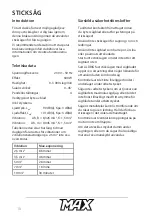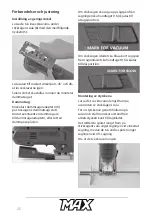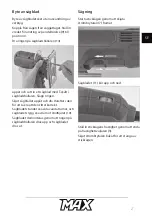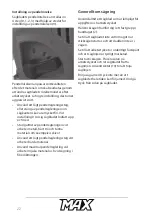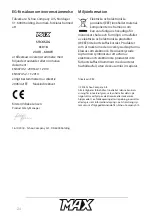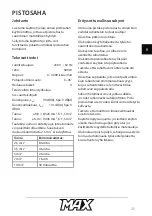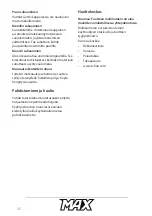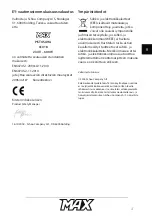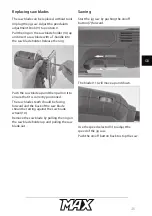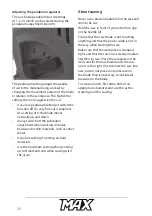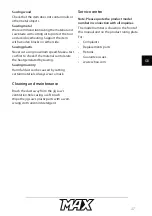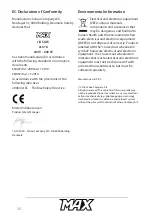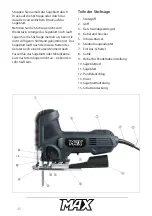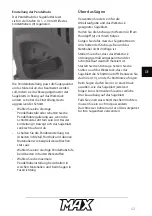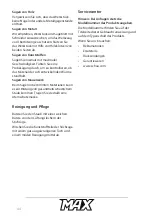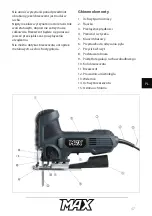
32
JIG SAW
Introduction
To get the most out of your new jig saw,
please read through these instructions
before use.
Please also save the instructions in case you
need to refer to them at a later date.
Technical data
Voltage/frequency:
230 V~ 50 Hz
Power rating:
600 W
Speed:
0-3,000 impacts/min
Angling of soleplate:
0-45°
Pendulum settings:
4
No tools needed for blade replacement
Incl. parallel guide
Sound pressure, L
pA
: 90 dB(A), Kpa: 3 dB(A)
Sound level, L
wA
:
101 dB(A), Kpa: 3 dB(A)
Vibration:
ah,B = 8.326 m/s
2
, K: 1.5 m/s
2
Vibration:
ah,m = 9.045 m/s
2
, K: 1.5 m/s
2
The table below shows how long you
may be exposed to vibration every day, if
the vibration load of 2.5 m/s
2
is not to be
exceeded:
Vibration
Max. exposure
2.5 m/s
2
8 hours
3.5 m/s
2
4 hours
5 m/s
2
2 hours
7 m/s
2
1 hour
10 m/s
2
30 minutes
Special safety requirements
Always unplug the jig saw before changing
the blade or making any other adjustments!
Do not use for cutting pipes or cables.
Do not use cracked, blunt or damaged
blades.
Do not start the saw if no blade is � tted.
Do not clamp the jig saw in place with the
blade pointing up to use as a bench saw.
Check there are no obstructions in the
surface under the item to be cut.
Do not attempt to cut items thicker than
the maximum cutting depth of the blade, or
where there is insuffi cient clearance for the
blade under the item.
The saw’s metal parts may become
conductive if the saw comes into contact
with a live wire. You should therefore only
hold the jig saw by its insulated handle.
Check that the motor’s vent holes are not
blocked.
Always use a face mask if excessive amounts
of dust are generated or if cutting hazardous
materials.
Never remove dust, obstructions or the
like from the work area while the blade is
operating.

